To the bat cave!
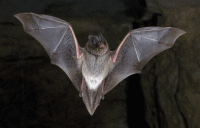
There are more than 1,100 bat species in the world, so we can't talk about all of them here!
Bats can be as large as a small dog or as small as a bee. The largest bats are the flying foxes with wingspans of up to 2 metres and a body weights of up to 1.5 kilograms. At the other end of the scale is the bumblebee bat, weighing only 2 grams - the world's smallest mammal! Did you know that bats are more closely related to humans than they are to mice?
Bats in the UK eat only insects, but bats elsewhere also dine on frogs, fruit, other bats, nectar from flowers, blood, pollen and fish. Some bats use echolocation to navigate and hunt, whilst others rely on smell and vision to find food.
Classifying bats: a complex story
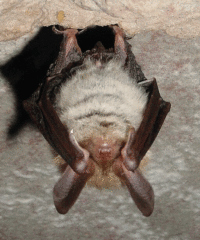
Families of bats were classified as microbats if they used 'true' echolocation (with calls produced from their larynx or voice box) to navigate or hunt, other families were classified as megabats; it was thought that microbats evolved to echolocate whilst megabats did not.
But recent research suggests a more complex picture. Studies of genetics have identified different relationships between some families of bats. For example, the horseshoe bat family (that are insect eating and tend to be small bats) are genetically more closely related to the families of fruit bats, which we previously called megabats, than they are to those families we called microbats. The subdivision of bats into Megachiroptera and Microchiroptera is, therefore, no longer appropriate. There are two alternative proposals for the new groupings of families of bats: Yinpterochiroptera and Yangochiroptera, and Vespertilioniformes and Pteropodiformes; currently, researchers do not all agree which is correct and both sets of names are used.
Some scientists now also believe that echolocation was used by a common ancestor of all the bats that exist in the world today. Echolocation might have then been lost in 'megabats', only to re-evolve in some of these species - including greater horseshoe bats and lesser horseshoe bats, which live in the UK.
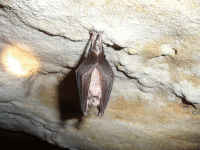
Bats live in different environments across the UK. Exactly where they might be found depends on the species of bat, the time of year and what they're doing - looking after their babies, hunting or hibernating, for example.
To survive, bats need water and insects to eat, places to hunt insects (called foraging habitats), places to hibernate, sleep and raise their babies (roosts) and safe routes between these different locations (commuting habitats).
At home
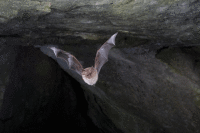
The place a bat lives is called a roost - not a nest! Bats need different roosting conditions at different times of the year and they will often move around to find a roost that meets their needs. In summer, female bats form maternity roosts whilst, in winter, bats use hibernation roosts. Most bats in the UK evolved to live in trees and caves, but many have now adapted to roost in buildings, including barns, houses, tunnels and bridges. This is due to habitat loss removing natural roosting opportunities. Some of the UK's older churches have seen generations of bats return faithfully to the same roost year after year.
You can enjoy watching bats in their homes from the comfort of yours via internet bat cams. Examples are two that have been set up in Devon and Denbigshire by the Bat Conservation Trust:
- Devon Bat Project has a link to see greater horseshoe bats in Devon
- Nantclwyd y Dre is a roost of lesser horseshoe bats in Denbighshire
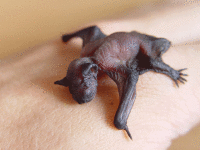
* Bats and their roosts are legally protected. Please do not set-up a web cam in a bat roost without seeking appropraite advice, for example from a licensed bat worker or the relevant Statutory Nature Conservation Organisation for your part of the UK.
Out and about
All UK bats eat insects, so they need to find roosts near good foraging habitats such as pasture, woodlands or water. Bats also need good commuting habitats to help them travel safely between their roosts and foraging grounds. Because bats use echolocation to navigate, hedgerows, treelines or rivers can help them find their way more accurately - as well as sheltering them from predators. Widening roads and artificial lighting can sever bat commuting routes and cut them off from their preferred foraging habitat.
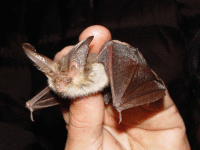
In Britain, all bat species and their roosts are legally protected, by both domestic and international legislation.
This means you will be committing a criminal offence if you:
1. Deliberately capture, injure or kill a bat
2. Intentionally or recklessly disturb a bat in its roost or deliberately disturb a group of bats
3. Damage or destroy a bat roosting place (even if bats are not occupying the roost at the time)
4. Possess or advertise/sell/exchange a bat (dead or alive) or any part of a bat
5. Intentionally or recklessly obstruct access to a bat roost
Please refer to the legislation for the precise wording - the above is a brief summary only.
How to Report a Bat Crime
Licensing
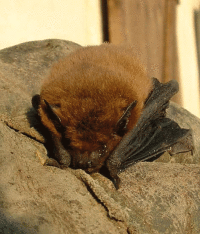
Licences to permit illegal activities relating to bats and their roost sites can be issued for specific purposes and by specific licensing authorities in each country. These are sometimes called 'derogation licences', or 'European Protected Species licences', and are issued under the Habitats Regulations. It is an offence not to comply with the terms and conditions of a derogation licence. If you carry out work affecting bats or roosts without a licence, you will be breaking the law.
Who needs to take particular note of the legislation?
- Property owners/householders who have a bat roost in their property
- Woodland owners, arboriculturalists and foresters
- Pest controllers
- Planning officers and building surveyors
- Architects, property developers, demolition companies, builders and roofers
Which legislation is relevant for bats and roosts?
- In England and Wales, the relevant legislation is the Wildlife and Countryside Act (1981) (as amended); the Countryside and Rights of Way Act, 2000; the Natural Environment and Rural Communities Act (NERC, 2006); and by the Conservation of Habitats and Species Regulations (2010)
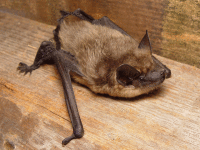
- In Scotland, the key legislation that applies is the Conservation (Natural Habitats &c.) Regulations 1994 (as amended)
- In Northern Ireland, bats are listed under Schedule 2 of the Conservation (Natural Habitats etc) Regulations (Northern Ireland) 1995 and, in the Republic of Ireland, under Schedule 5 of the Wildlife Act 1976 and Schedule 1 of the European Communities (Natural Habitats) Regulations 1997.
Defences include:
1. Tending/caring for a bat solely for the purpose of restoring it to health and subsequent release
2. Mercy killing where there is no reasonable hope of recovery (provided that person did not cause the injury in the first place - in which case the illegal act has already taken place)
Penalties on conviction - the maximum fine is £5,000 per incident or per bat (some roosts contain several hundred bats), up to six months in prison, forfeiture of items used to commit the offence, e.g. vehicles, plant, machinery.
The Bat Conservation Trust is the leading NGO solely devoted to the conservation of bats and the landscapes on which they rely.
There is a diverse range of work carried out - both on the ground and behind the scenes - to help secure the future of bats in our changing world.

The National Bat Helpline on 0345 1300 228 is able to offer advice to building and planning professionals, householders with bat roost questions and members of the public who have found injured and grounded bats.
UK Bats
We are lucky enough to have eighteen species of bat in the UK, seventeen of which are known to be breeding here - that's almost a quarter of our mammal species.Every summer, thousands of people venture out to experience the wonder of bats in their natural environment. Sadly, bat populations have suffered severe declines during the past century, but the Bat Conservation Trust and more than 100 local bat groups are working hard to help our bats hang on.
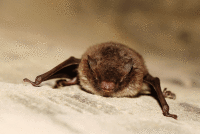
Our resident breeding species are:
Alcathoe bat (Myotis alcathoe)
Barbastelle (Barbastella barbastellus)
Bechstein's bat (Myotis bechsteinii)
Brandt's bat (Myotis brandti)
Brown long-eared bat (Plecotus auritus)
Common pipistrelle (Pipistrellus pipistrellus)
Daubenton's bat (Myotis daubentonii)
Greater horseshoe bat (Rhinolophus ferrumequinum)
Grey long-eared bat (Plecotus austriacus)
Leisler's bat (Nyctalus leisleri)
Lesser horseshoe bat (Rhinolophus hipposideros)
Nathusius' pipistrelle (Pipistrellus nathusii)
Natterer's bat (Myotis nattereri)
Noctule (Nyctalus noctula)
Serotine (Eptesicus serotinus)
Soprano pipistrelle (Pipistrellus pygmaeus)
Whiskered bat (Myotis mystacinus)
There are a number of other non-resident bat species that occasionally make appearances on our shores
having blown over from the continent, notably Kuhl's pipistrelle (Pipistrellus kuhlii) and Parti-coloured bat (Vespertilio murinus).
The Greater mouse-eared bat (Myotis myotis) was officially declared extinct in 1990, but a solitary individual male has been hibernating in southern England since 2002.
